So you’ve got a blog. Don’t tell yourself that great content alone should do the job. It’s a trap. The world’s most essential information will remain unknown unless you deliver it consistently. This little cold, hard fact here is where we all started from.
What you’re about to read is a general guideline with examples. Finding your brand voices is more than just establishing a consistent communication strategy – ‘the how?’ and ‘why?’ are at least as important as the ‘what?’. Our best advice is not skipping steps, no matter how much of a hurry you are in – every factor you ignore at this stage will leave a permanent mark in the core foundation of your brand. There’s no kryptonite in business; business Gotham is a world of competitive advantages.
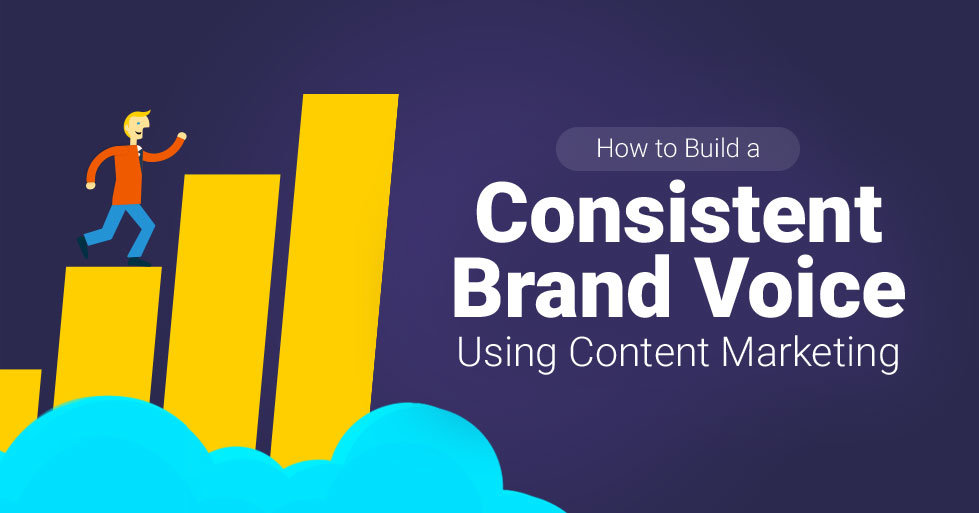
Find Influencers
Search for your niche on Google, and see the most popular search result. In the screenshot below I have searched for ‘content marketing’ to see what top blogs would appear on the first page of the results. It can be a little overwhelming at first because establishing influencers is, from a point on, a judgment call.

So just to make sure you’re not leaving anyone out, take it slowly. Put it down and create a spreadsheet with 10 to 20 names who can teach you something. That spreadsheet is now your best friend – it’s there to remind you what you’re doing wrong and where you should start improving. It’s also not a metaphor – we understand how it can be hard to remember everything religiously and to make sense of it all at first; this is why a little help may come in handy.
Follow and Get to Know Influencers
Subscribe a lot. Now more than ever, it’s not only about the latest posts, as it is about the ancient history of a blog as well. Spotting a writing style doesn’t happen as you only browse through the latest posts, it takes some research as well. And, most importantly, if you spot differences between the articles written two years ago and the ones posted now, it’s either because of an organic evolution or thanks to noticing that the latter style is better received by the public. Either way, this is information you’d like to take into account when setting some writing guidelines for your blog.
The change of influencers’ style over time is one of the key factors to take into consideration.
Before going further with this idea, maybe it would be appropriate to remind you that copying someone’s style is never a good, long-term solution if proficiency is what you’re aiming for. It is cheap and sooner rather than later you’ll start losing credibility.
That being said, closely monitoring your influencers’ style doesn’t only give you insight on how much they have evolved, but on how trends have changed direction as well. Any brand should have a general tone and professionals’ preferences in the industry can have a humongous contribution on spotting the right vibe you’d like to send along with your content.
Let’s assume friendly is what you find to be the most appropriate – as long as it doesn’t gradually turn into cheap, unprofessional gossip, it’s a great idea. The next step is to make sure that your entire communication strategy is consistent and doesn’t give people cognitive dissonances. In other words, your brand tone is more than what you’re saying and how you’re saying it. It’s everything from the general impression I’m given at a first glance to the strong opinions I’ll have about your brand when I’m done reading the dustiest corners of your blog. Choose wisely. You may also want to set up a webpage design consistent with your general message.
Actually you can judge a book by its covers.
Particularly when it’s about what book covers should be like. You can’t be an online professional with a site looking like we’re back to 1995, regardless of the content quality. Once again, watch and learn. Monitor brands’ transformation in time and get an idea of what your audience appreciates. Use the Wayback Machine to spot the most significant adjustments of your competitors.
Take Moz Blog for instance. It’s been through numerous changes since 2013, particularly because, in this industry, the better you look the more reliable you are. Let’s take a short look.
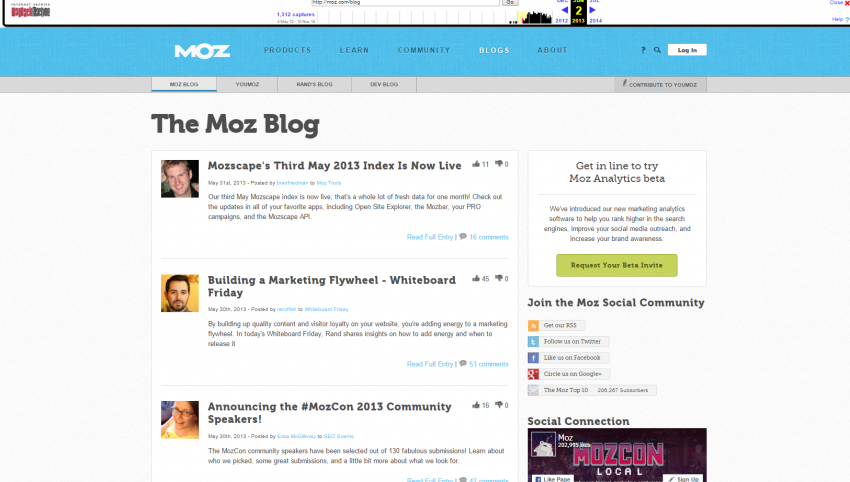
Starting with 2015, this blog was redesigned to look more minimalist, gadget-friendly and weightless. This light, dynamic design is nothing but a necessity meant to keep the everyday reader engaged through a friendly, playful appearance.
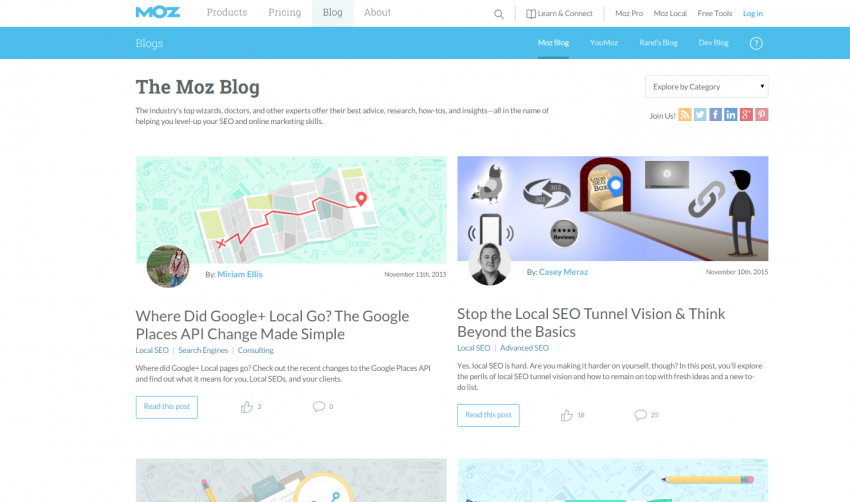
Another smart strategy that builds suspense very much like a Hitchcock movie is the example of QuickSprout – announce a blog before working out the writing details. If you’re running an advertising campaign or if you’re already popular, it creates curiosity.
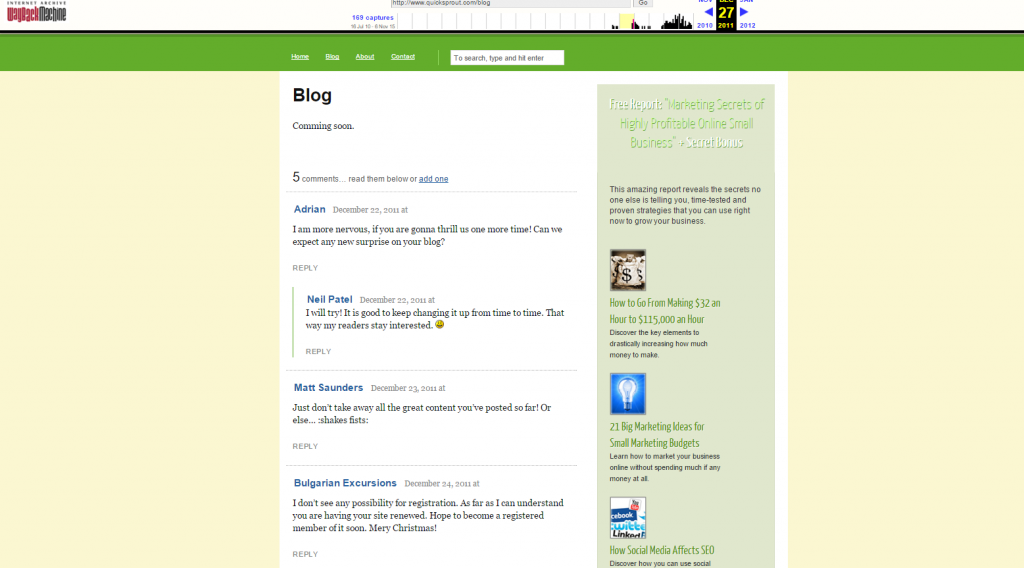
This blog has gone through changes in time. When a page that’s usually consistent in terms of appearance get updated, you know something important was to be taken into consideration. In the case of Quicksprout, the purpose was to look cleaner, easier to read and follow.
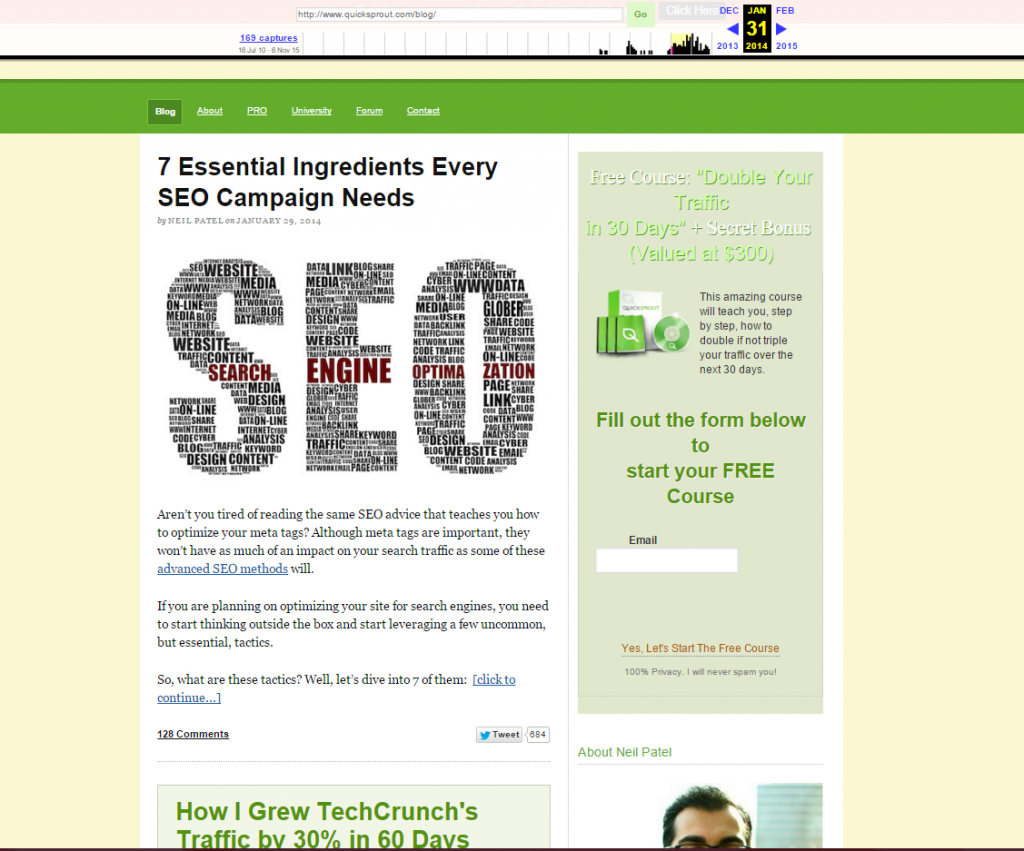
Less distracting pages engage more audience, as they’re associated with content quality – spot the differences between the two screenshots below. The second one’s the one that seems to work better today adapted to the target needs and requirements.
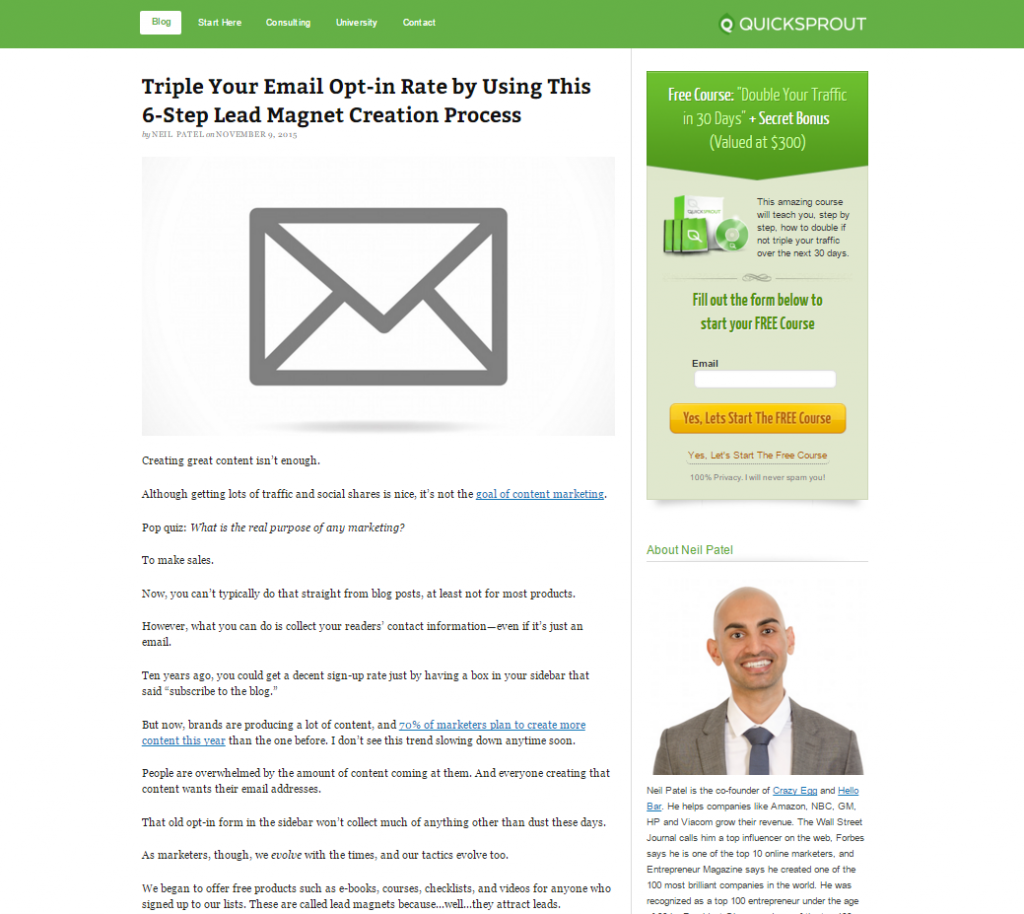
Try to discover a pattern of when the articles are posted – what kinds of posts have steady publishing dates and which ones are an exception to the rule? Put it all down!
Usually, not only the day of the week – but the time as well – is highly important. Assuming the content is great and it engages, your readers should know exactly when to come back for more. This way, they can integrate the very pleasant 20-minute read into their daily routine. Having a clear schedule for content posting shows good organization skills. Take it as a mark of professionalism.
Prioritizing a voice over another is vital, because it gives you a sense of direction. It makes the distinction between terrific and mediocre for the readers and, in time, you’ll be able to see the differences for yourself. Reading as much as possible also gives you a vibe of the readers’ minds, showing you exactly what they come back for and what they ignore.
Understand What Customers Consume in Social Media. And When.
Finding a brand voice is about who you are and what suits you. But it should also be about what suits your audience. There is no room for compromise here. The ideal way is to research a voice not only of your brand, but of your customers as well. Something that represents both you and your clients, offering a competitive advantage at the same time.
Social media is a lot about meeting expectation. Not just because we like to a confirmation that our existing beliefs are correct, but because we know what to be looking for when interacting with a brand. However, there’s a fine line between this and predictability.
Influential content that engages should be both consistent and accessible. Form and substance have to be harmonious, relevant and substantial. However, nobody enjoys a read that seems too heavy.
In this case, your brand voice is both what you’re saying and how you’re delivering it. Fortunately, what seems to have positive results in the social media in your niche is a powerful indicator of the general direction you should head towards.
Let’s analyze some examples to see how this works in practice. We’ll analyze Backlinko and Search Engine Land for this part. Monitoring their social media engagement on the blogs gives us insight on what the audience is most interested in reading.
Let’s take the Viral Marketing Case Study: How a Brand New Blog Generated 17,584 Visitors In One Day post for instance and see what Brian Dean did on his site Backlinko to have such a high engagement rate:
- it built an in depth post that details every step of the process, inspiring trust as a source;
- it based the content on an implemented strategy that brought results, building credibility;
- it is organized to encourage reading, with small paragraphs, detailed lists, bullets and infographics;
- humor is used to relax the audience, while sending a friendly (but professional) vibe.
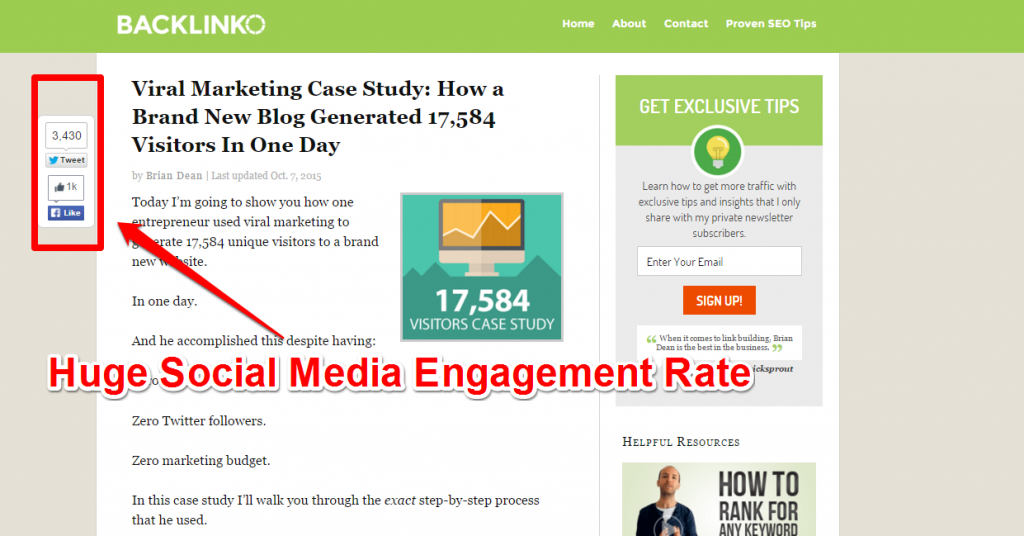
It’s no wonder why the post has 330 comments and such an astonishing shareability with a total bigger than 4k. To see if these observations apply in another successful example, let’s take a look on one of Danny Sullivan’s blog posts. He is the proud founder of Search Engine Land.
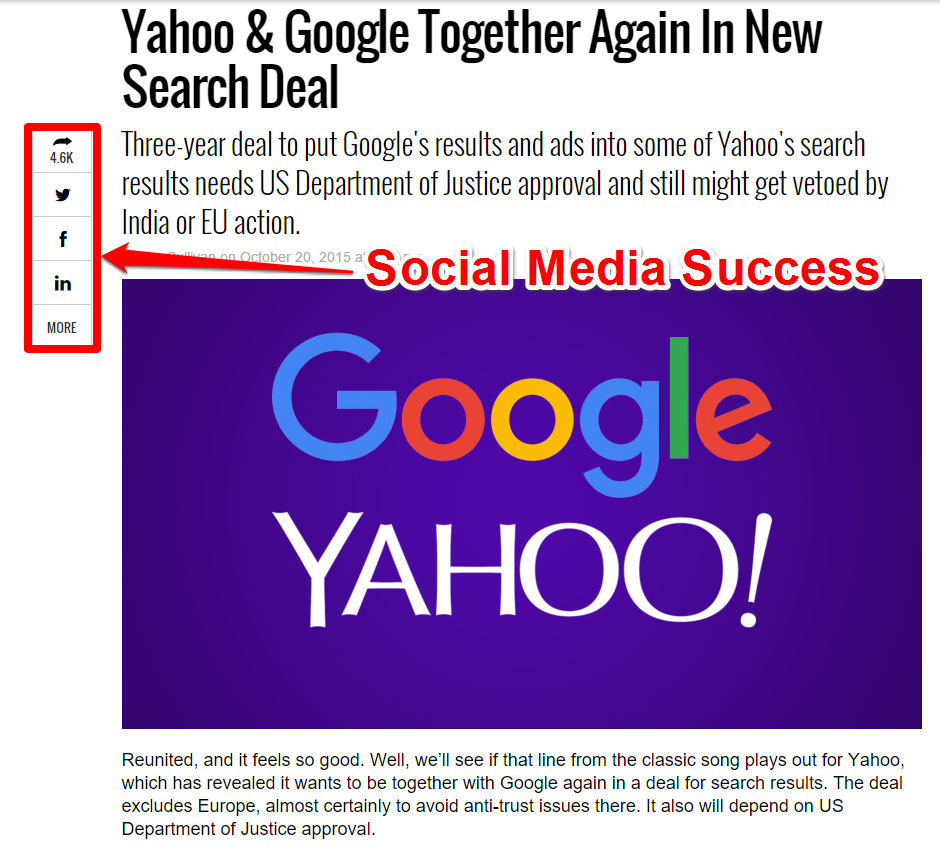
Search Engine Land is, without doubt, another top go-to of its niche, which explains the massive success in social media shareability. Even so, some posts are more popular than others. What makes the difference?
- the use of numbered lists, headings and other content separators to help the audience follow the content effortlessly;
- practical examples that confirm the theories he is exposing and vouching for through solid analysis that is properly researched;
- the information is highly relevant for people in the niche.
These elements are key indicators to take into account when thinking of what brand tone you’d like to be associated with. While you’re sure that all these factors have a positive impact on the audience (after all it’s the mammoths who are using them, right?), you’ll keep in mind not to be a copycat. This is the mere beginning when you’re gathering data to understand the general preferences you’ll be working around.
Monitor Their Social Media Strategies
No social media success is hazard. Well, maybe just Gangnam Style, but none other. Counting on your real-life charm and high quality content won’t do the trick online, where there is so much at stake. And yes, in the end, it does feel like you’ve earned every single tweet, click, share, pin or like – and it’s supposed to. Because behind the overwhelming success you’re now hating your competitors for there is serious planning.
Be aware, all social media strategies have their ups and downs. It’s really hard to keep up with the crowds, even when they’re your audience and you know their needs by heart. It’s not enough, at the beginning.
Look over the fence and take your competitors’ example. For instance, we find from this social media analysis that the Backlinko’s Twitter performance (upper left in the screenshot below) lately doesn’t seem to recommend the current strategy, nor does Facebook traffic (upper right). Monitor your competitors’ content and see what drives attention – because something clearly does, be it for another audience, as we can see from the G+ (bottom left) and LinkedIn (bottom right) content performance. See that on Google plus (bottom left) the situation is dramatically better compared to Twitter in terms of content promotion evolution.
Ask yourself what is that drives so much visibility and why the same content performs differently on distinct platforms. It must be that the audience is looking for other things on Google plus compared to Twitter – draw your conclusions from here too, see which content is appropriate for which social media environment.
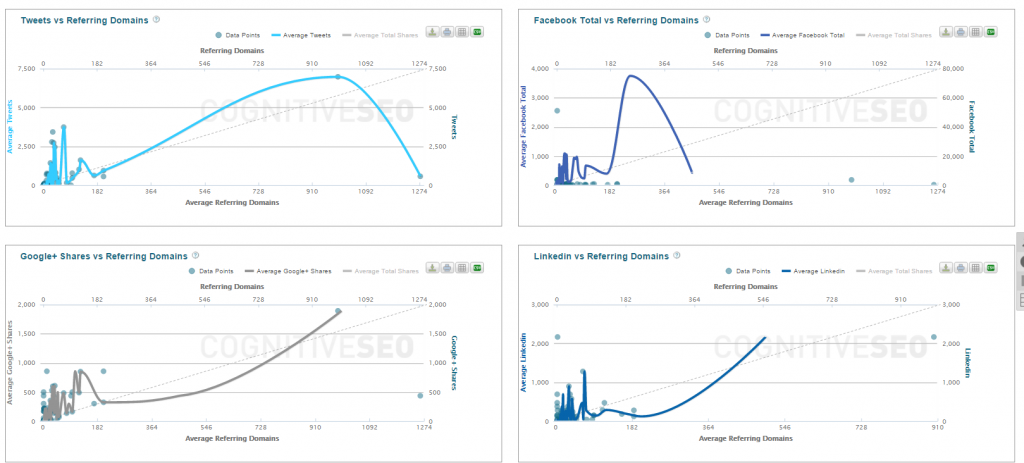

The same goes for Danny Sullivan’s blog. The difference is that he seems to have a better (and relatively steady) performance on both Twitter and Facebook. Maybe it’s time to make a comparison and see what type of content works better and where. For instance, see the Facebook graphic (upper right) – it’s having spikes – it must mean that whatever Search Engine Land is doing with its content drives organic shareability on a steady basis, but differentiated however. You’ll adapt this strategy to your content, audience and needs.
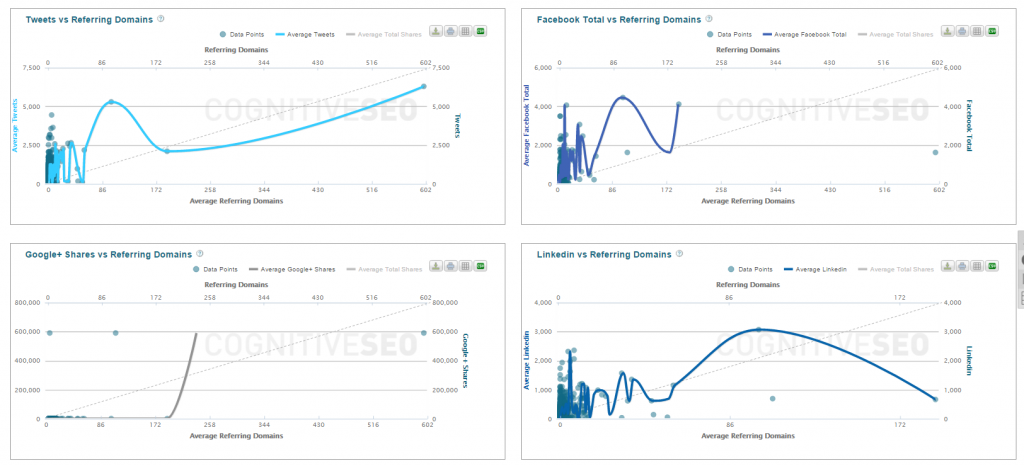

Don’t think that this research period is a waste of time and can be treated superficially. After all, it’s the one that dictates your future performance. It’s true what they say that days spent in planning are worth months in implementation.
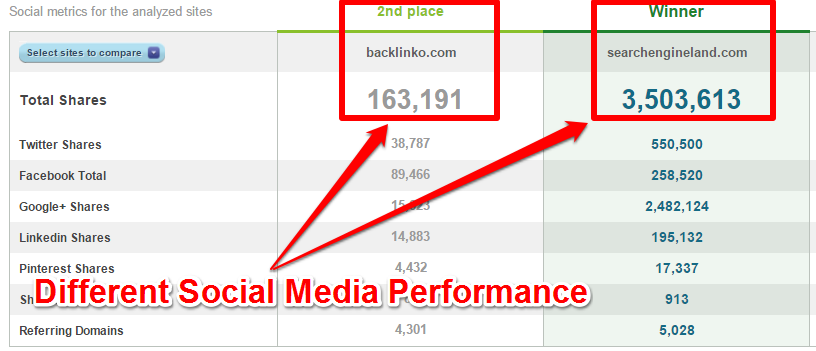
Content-Related Decisions
Let’s not forget that brand voice is, roughly, about content. From your content strategist to a potential customer, everybody should remember what they’re on the site for: information. Potent, accessible information. Design is merely the context that makes your outstanding ideas truly shine. Screaming or whispering don’t work online, so you’ve got to be very careful of how you engage your audience and send the right message.
-
Tempo and Sentence Length – Between Balzac and Primary School
Speeding up the flow of your thought processes through short sentences, quick-flowing words with many verbs and no adjectives is one way of using tempo to suggest something. Of course, conversely there is the slow down, with lots of adjectives and a descriptive tone.
It doesn’t look that bad in theory, does it? Regrettably, when it comes to practice, the message we wish to transmit doesn’t always magically, perfectly fit one of the two. You’re not Cinderella. Instead, the correspondences are subtle and it takes time to calibrate the pace of your writing to the thought flow you wish to transmit.
Do research. Read a lot. Take notes. Never run out of coffee.
Underline short and long sentences in the good articles you read using different colors. Understand when the tempo changes and why. And again, put it all down. Try to think in patterns of what works where.
Don’t let yourself get overwhelmed. Keep in mind who you are, what your brand’s personality is and what the purpose of all this is. The implicit premise of this is gaining competitive advantage, so don’t be too afraid of stepping out of the patterns.
-
Colloquialisms and Jargon – Friend or Foe?
Being conversational and human isn’t easy on the web, particularly when you’re trying to sound professional. Before making a decision on the semantic direction, you should first see if you’re trying to sell (persuade, attract) other businesses or people. A lot can differ between the standards of the two categories.
Nobody should ever forget why we have jargon in the first place: not to sound smart, but to be efficient.
It’s clear that nobody likes robotic voices, but maybe you wouldn’t like to sound like Lil’ Wayne when addressing Windows and Apple. The fact that approximately 67% of the businesses make purchase decisions based on web content doesn’t exactly relieve the pressure, but it puts things in perspective.
Your niche has its abbreviations and jargon. While looking down to your readers is unacceptable, don’t try to remove the technical terms entirely from your content, you’ll sound unqualified and poorly informed. Use them when necessary.
Find a Definite Topic and Exercise a Lot
The problem with a world where everybody thinks they’re an expert is that you won’t be reliable unless you’re specific. Thus, by choosing a topic, I don’t quite mean a general industry to babble about in 2000-plus words. The content has to be hands on, worth reading; we’re already too busy as it is. If you’ve managed to capture my attention, don’t waste this opportunity on mindless common sense.
Let’s take a look at Brian Dean’s article on Backlinko. Besides being very specific in his posts, he also shares his professional experiences as they happen. This is a great way of building credibility as a brand along with a powerful voice that people will be dying to hear.
Sharing information that wasn’t really favorable in terms of image is one powerful statement on business confidence – in the brand he’s advocating for and the customers as well. This is a kind of topic that’s impossible not to appreciate, even if you’re not in this niche.
And approximately 2k shares and 533 comments isn’t too shabby for an online marketer. But you won’t write on this level at first.
Being consistent and pleasant in writing takes time and exercise. One thing I have always recommended is choosing a topic, thinking whether it’s specific enough to be relevant and broad enough to have an audience. After this, a good exercise would be writing three different articles on that subject. Of course, they’ll have their strengths and weaknesses. Before posting anything, see what pleases you and what doesn’t compared to what you wanted to achieve.
Ask yourself:
- Is it appropriate for your audience?
- Is everything you wanted to transmit clear?
- Does the style flow? Does it feel a little difficult to read?
- What else would you like to know if you were uninformed on the topic?
- Who, from your friends in the industry, would find the information on that article useful?
Spot What Your Audience Wants
To successfully make an image of your readers’ personas it’s enough to take a look at the people reading your content – or, even better, linking to your content. We’re going to start from the following premises:
- the popularity of the mammoths in your niche is mostly organic – the result of hard work, commitment and high performance;
- the general idea of backlink inspection could help you make a more accurate and specific impression on who’s going to be interested in your services;
- it’s crucial for your brand voice to address the needs of the above mentioned category (the ones that your competition doesn’t if possible), and knowing who they are and what their style is solves half of the job;
At a first glance, the webpage type and category give you insight on two matters of substance: what you competitors’ backlink strategy is and who’s generally interested in promoting/linking to their content.
As we can see from the graphs below, the webpage type as well as the webpage category profiles are similar for both Backlinko’s blog and Search Engine Land, which indicates a common backlink strategy profile. Regarding the webpage type, both of the blogs get most of their links from blogs; Backlinko’s following categories are forum, personal site and e-commerce, while Search Engine Land’s are web directory, forum and e-commerce.

Concerning the webpage category most of Backlinko’s backlinks originate from tech, business and warez, while Search Engine Land’s link sources are business, tech and careers.

Having made this short analysis, a useful approach would be browsing through some of the pages to see their general style as well as the type of content: how broad they are in the industry, the visibility they have, the social media engagement on their posts, the general tone of writing (assuming they’d look for the same genre in SEO tools as the one they use in developing their business).
Conclusion
Finding a brand voice is perhaps one of the most fundamental questions when starting a business. It has to be both appropriate and consistent with your purposes and it needs a powerful personality to stand out from the general commercial noise.
You can’t offer a memorable experience without massive involvement in networking and social media, but none of these are possible without the style pillars you should establish for your communication strategy.

 Site Explorer
Site Explorer Keyword tool
Keyword tool Google Algorithm Changes
Google Algorithm Changes

Do you mind if I quote a few of your articles as long as I provide credit and
sources back to your blog? My blog is in the exact same area of interest as yours and my users would really benefit from some of the information you present here.
Please let me know if this alright with you. Appreciate it!
Hi!
Glad you like our articles 🙂 Sure, you can share them with your audience; don’t forget to mention the original source 😉